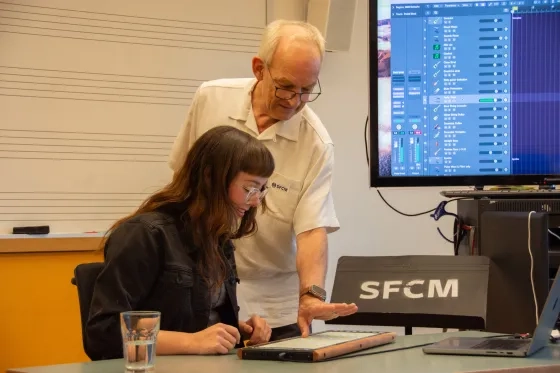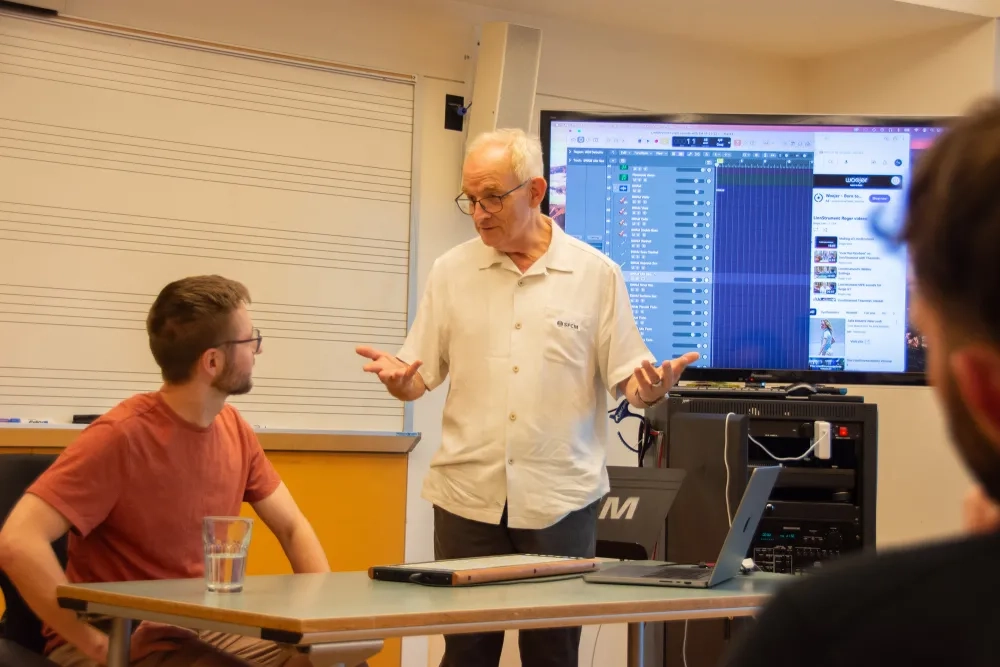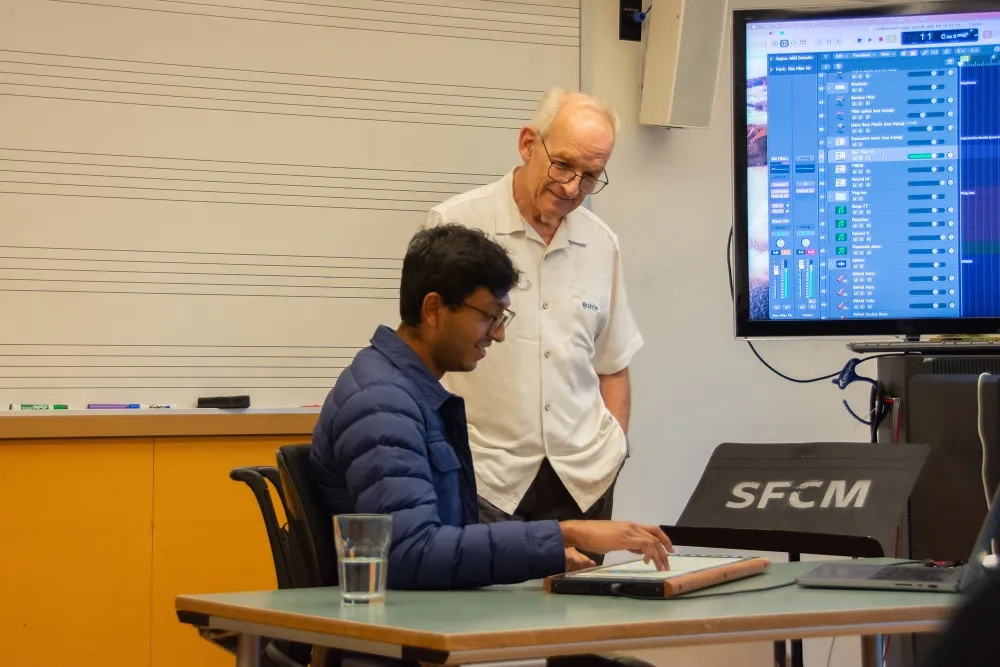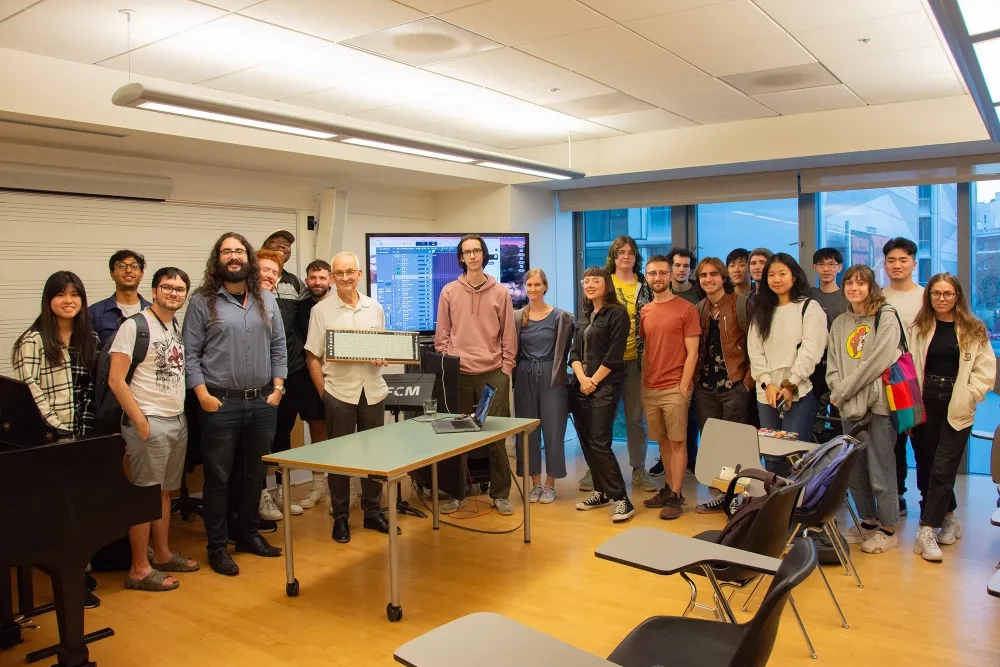Roger Linn, Man Behind Prince and Michael Jackson's Drum Sounds, Visits SFCM
News StoryRoger Linn's LM-1 and LinnDrum machines can be heard on records by Giorgio Moroder, Devo, John Carpenter, and even Katy Perry.
If there were a Mt. Rushmore of electronic instrument inventors, Roger Linn would be on it. Like Robert Moog, Linn's name has become inseparable from the revolutionary sounds his drum machines, the LM-1 and LinnDrum, helped create. The LM-1, in particular, was the first drum machine to use samples of acoustic drums, as well as being one of the first able to be programmed by users. It was quickly adopted by a who's-who of music makers upon its introduction in 1980—most notably Michael Jackson and Prince—and came to help define the sound of the decade's music.
Linn visited the Technology and Applied Composition department in September to talk with students about his history with instrument invention, some new projects, and his thoughts on the future of music.
Linn spoke about his early days with his drum machines, but returned repeatedly to the human elements of music. "I really respect the fact that a lot of people value these old machines, but I think it's not because of me. It's because of the artists that created very good music: I just make the brush and the artist comes along and uses it to paint."
"I wasn't a great musician," Linn said candidly. "I was always the guy in the front row at the jazz concerts, who would get there an hour early so I could get the front seat and watch, because to me, there's a magic when you watch someone who has that skill. I could never do that, I wasn't that talented. But to be able to make an instrument that enables people to go farther is as close as I can get and it's a lot of fun."
When asked about artificial intelligence (AI) in music, Linn's answer again foregrounded the human element. "There have been a number of examples where computers have done things that we thought were truly intelligent, and it didn't matter. We still valued humanity. In the late '90s, the Deep Blue computer beat Gary Kasparov, the chess master at the time, and some people were saying, 'Well, now there won't be any more chess championships, because what's the point?'"
"But chess players never stopped, because people didn't want to go see two computers playing each other. They wanted to see people sweat; they wanted to see a celebration of the human spirit. They want to see someone who's extraordinary. We're all as a culture searching to find out what is the ideal compromise or combination between the computer and the human."
Learn more about studying Technology and Applied Composition at SFCM.



